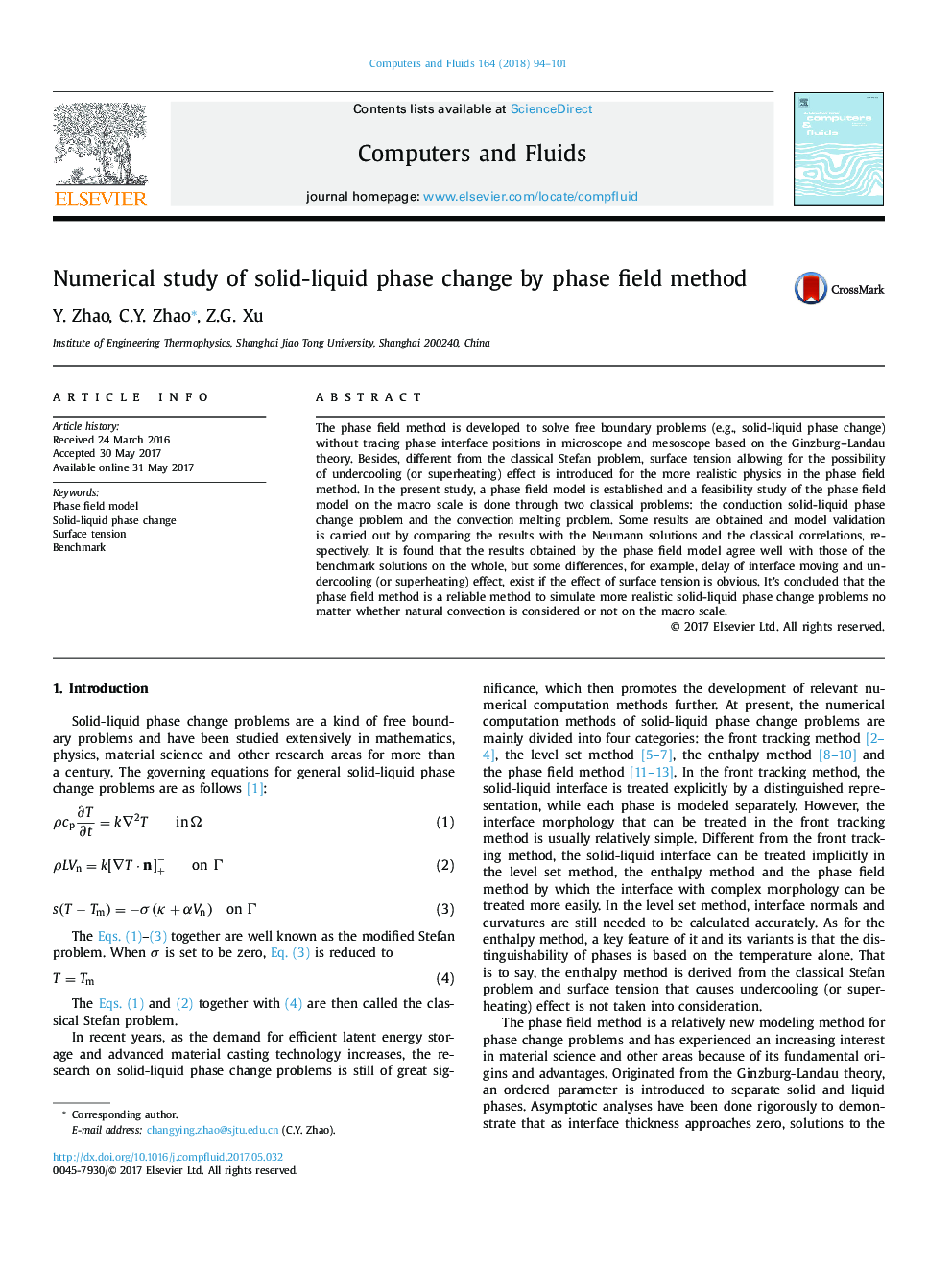| Article ID | Journal | Published Year | Pages | File Type |
|---|---|---|---|---|
| 7156430 | Computers & Fluids | 2018 | 8 Pages |
Abstract
The phase field method is developed to solve free boundary problems (e.g., solid-liquid phase change) without tracing phase interface positions in microscope and mesoscope based on the Ginzburg-Landau theory. Besides, different from the classical Stefan problem, surface tension allowing for the possibility of undercooling (or superheating) effect is introduced for the more realistic physics in the phase field method. In the present study, a phase field model is established and a feasibility study of the phase field model on the macro scale is done through two classical problems: the conduction solid-liquid phase change problem and the convection melting problem. Some results are obtained and model validation is carried out by comparing the results with the Neumann solutions and the classical correlations, respectively. It is found that the results obtained by the phase field model agree well with those of the benchmark solutions on the whole, but some differences, for example, delay of interface moving and undercooling (or superheating) effect, exist if the effect of surface tension is obvious. It's concluded that the phase field method is a reliable method to simulate more realistic solid-liquid phase change problems no matter whether natural convection is considered or not on the macro scale.
Related Topics
Physical Sciences and Engineering
Engineering
Computational Mechanics
Authors
Zhao Y., Zhao C.Y., Xu Z.G.,
